









The Scottish Gallery presents Kate Black’s first solo exhibition, The Women of the Parish, an immersive and theatrical installation that transforms our New Town Georgian Gallery room into a fictional world of women engaged in domestic rituals. These women might be seen cooking, cleaning, and tending to their homes, apparently for the benefit of cats… they are of course, Domestic Goddesses!

Kate Black is based in Malton, North Yorkshire, and works across collage, printmaking and textiles. Her practice draws on antiques, museum collections, and British social history, exploring the textures and rhythms of everyday life. Her creative process is a kind of storytelling with fragments, where objects and ephemera often act as sparks for imagined scenes and characters. Magpie Antiques in Malton, run by Gwyneth Warren, has provided many such starting points over the years as well as an enduring friendship.
Black is also a regular visitor to Beamish The Living Museum of the North, and The Black Country Living Museum, where it is possible to step into reconstructed historical settings and experience the past in a tactile, everyday sense. Standing in a Victorian kitchen or riding a tram to buy faggots and peas is the conduit for Kate’s imagination and imaginary world.
Kate Black’s collages begin with an idea which is expanded through sketches, notes and mind maps. Characters begin to emerge and appear with variations: a beard, a hat, or a shift in posture. These characters are then placed in real or imagined settings: outside Derek
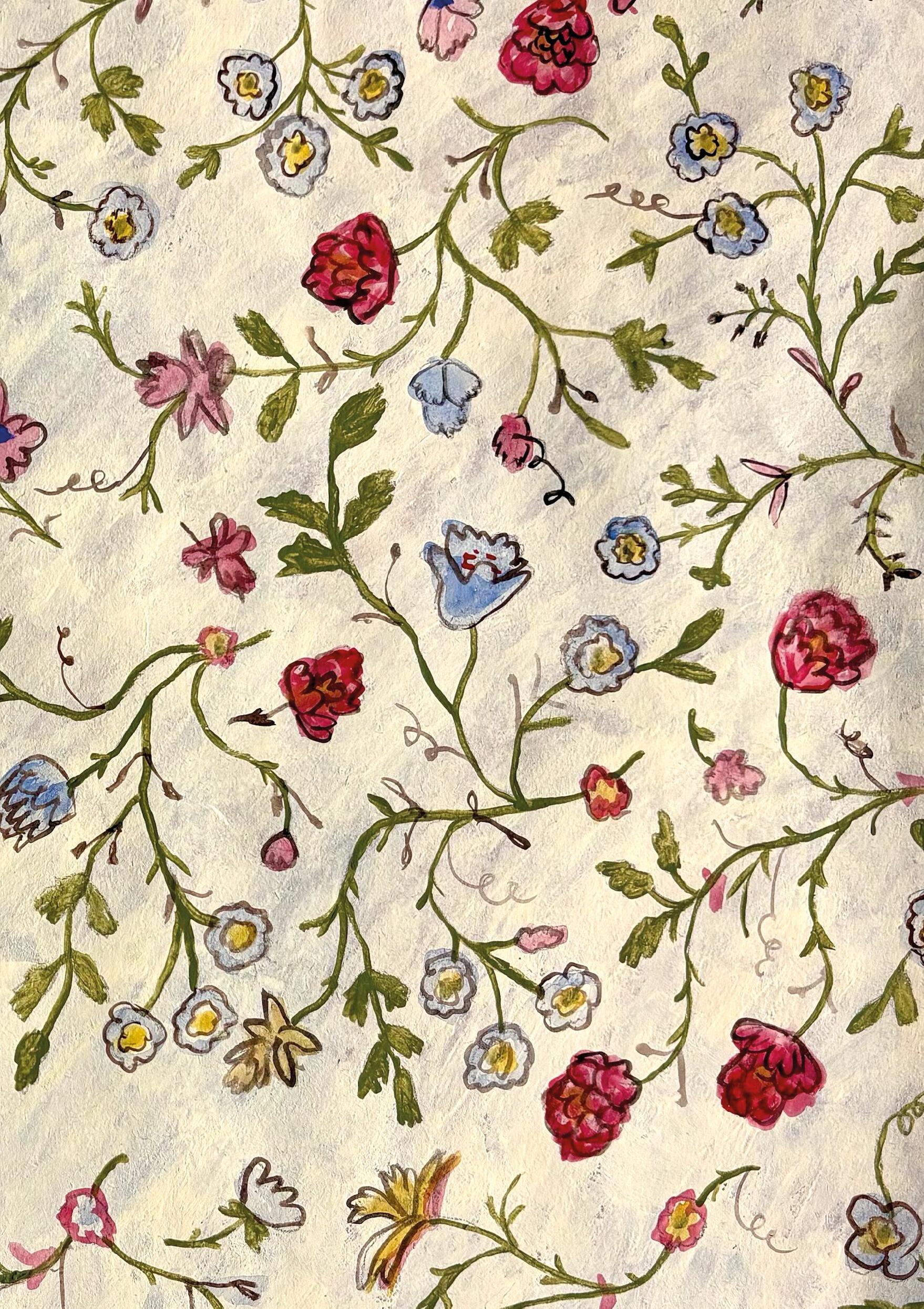
Fox Butchers, or in the kitchen or the chapel hall. Painted and lino-printed papers are prepared in advance, then cut and collaged with other found materials. The surfaces themselves are often chosen for their character. Record sleeves and vintage paper are a favourite of Black’s, offering both format and patina. The medium of collage allows Black to move pieces around, to experiment with rhythm, balance, and the relationship between text and image, shape, and space.
Much of Black’s visual world is taken from where she lives. Malton, with its still-operating sheep market and familyrun butchers, offers plenty of rich material. The signage, architecture, and hand-painted façades are all part of the visual vocabulary. The Baptist Church in Malton, dating from 1821, is both an architectural and social reference: a


space for worship and community, where meals, parties, support groups, and rituals are shared. Black also draws upon Pickering, Kirkbymoorside and Whitby which she references as more imagined than real.
British Folk Art is a joyful influence for Black, particularly in its spirit of unpretentious immediacy. The folk art at Compton Verney and by George Smart, with their depictions of daily life, offer an important reference point. Black gives equal value to crafts such as quilting, signwriting, and paper cutting. Making chutneys, clothes, furniture, and wallpaper are all part of a practice where distinctions between art and life are irrelevant.
Black’s compositions echo the structure of Mughal paintings, where pattern, repetition and flattened perspectives convey narrative. The approach is intuitive and fluid. Rather than a



single storyline, she suggests many overlapping themes and questions. The women in her collages often appear to be holding things together, but the surface calm conceals deeper currents. Like the characters in Virginia Woolf’s Mrs Dalloway, they are managing routines while quietly navigating solitude, inner lives, and unseen emotional labour. The concept of domestic work is central to this body of work. Black references cultural phenomena such as the Trad Wife ideal and the writing of sociologist Arlene Kaplan Daniels on Invisible Work, the unacknowledged and unpaid labour, usually carried out by women. In simple pictorial terms, what we see in Black’s collages is the work that mostly women do to manage the emotional, domestic and social needs of the whole family... and their cats.
Cats play a prominent role in these scenes. Black references Katherine Barak’s study on the figure of the cat lady, a stereotype historically used to marginalise women living outside traditional family structures. In the collages, cats are companions and caretakers, but they also impose their own routines and needs. They offer love and comfort, but they are also things to be cared for and looked after.
The kitchen and cooking is also at the heart of Black’s domestic scenes. Simple offerings such as bread and cheese,

toasted teacakes and Eccles cakes from Botham’s Bakery are peppered throughout Black’s collages. These simple meals are humble, intimate and entirely domestic. Black acknowledges the cultural shift brought by figures like Nigella Lawson, aka the original Domestic Goddess, who add glamour and sensuality to the act of cooking, but ultimately returns to a more grounded understanding of food as an act of service, repetition, and emotional labour.
The Women of the Parish is a constellation of ideas and imagination. Black steers us gently on the role of

women, the changing nature of modern work, the comfort of vintage signage and packaging, the emotional weight of routine, and the character of place. The collages speak to the fragility and beauty of the handmade in a digital age. Her collages ask what it means to make a home, to serve others, to find comfort or constraint in daily rhythms and to make a simple still life of flowers. Black’s practice is full of humour, tenderness, and ambiguity and the artist offers us one slice of cheese, one cat, one worn piece of paper at a time… enter the world of Kate Black.
THE SCOTTISH GALLERY
































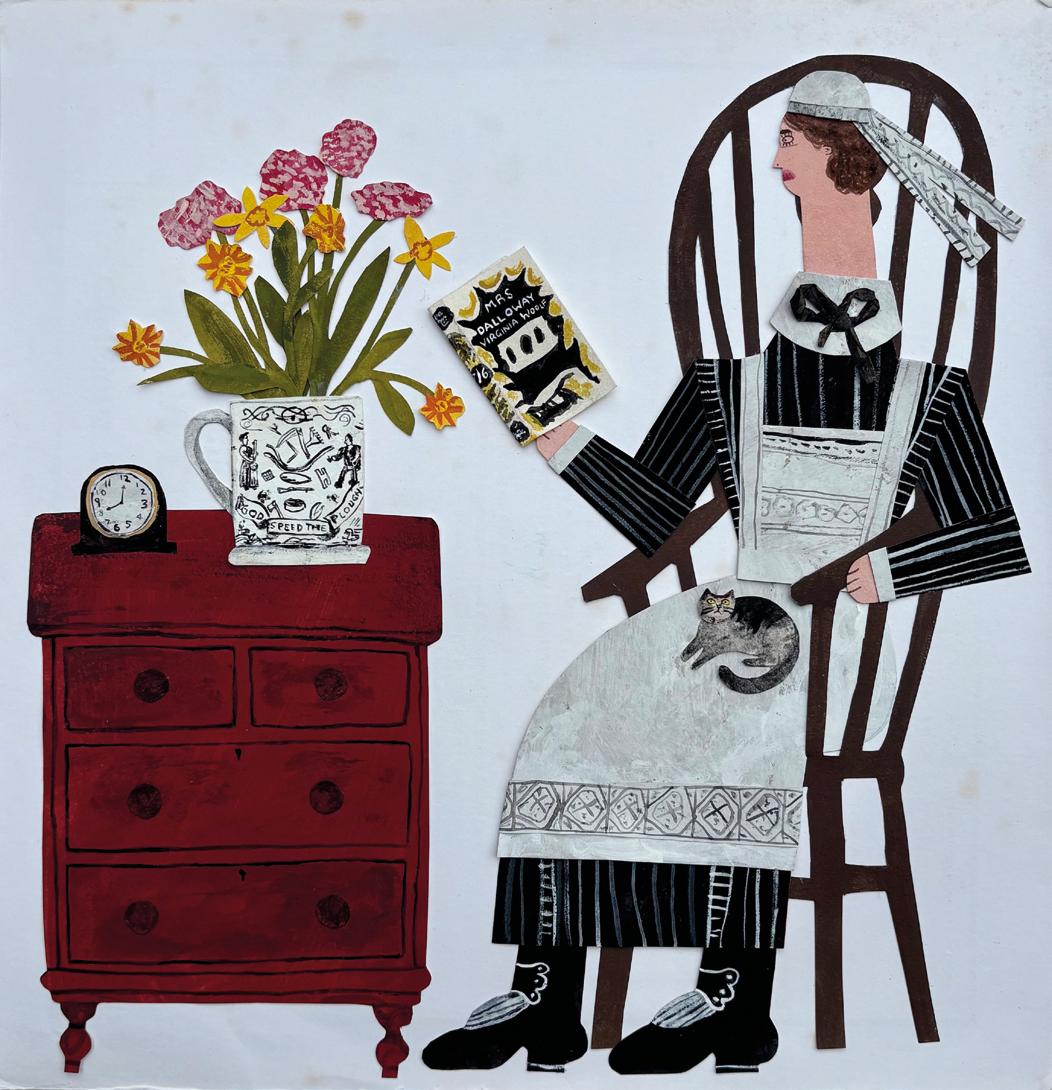






























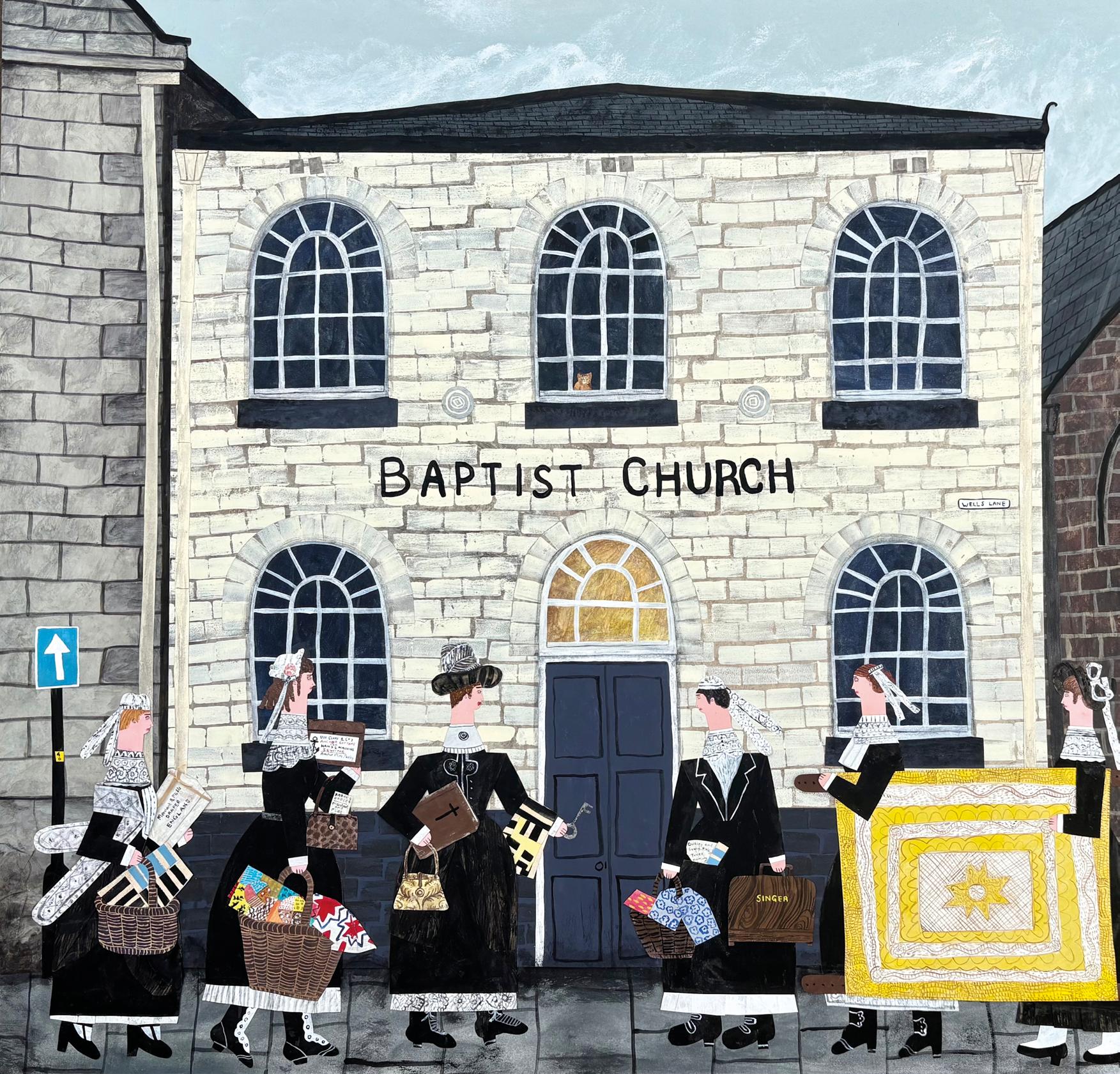




































































































2 12. Stay Warm This Winter gouache, acrylic and pencil crayon on found paper, 31 x 31 cm
X 13. Refreshments gouache, acrylic and pencil crayon on found paper, 31 x 31 cm






























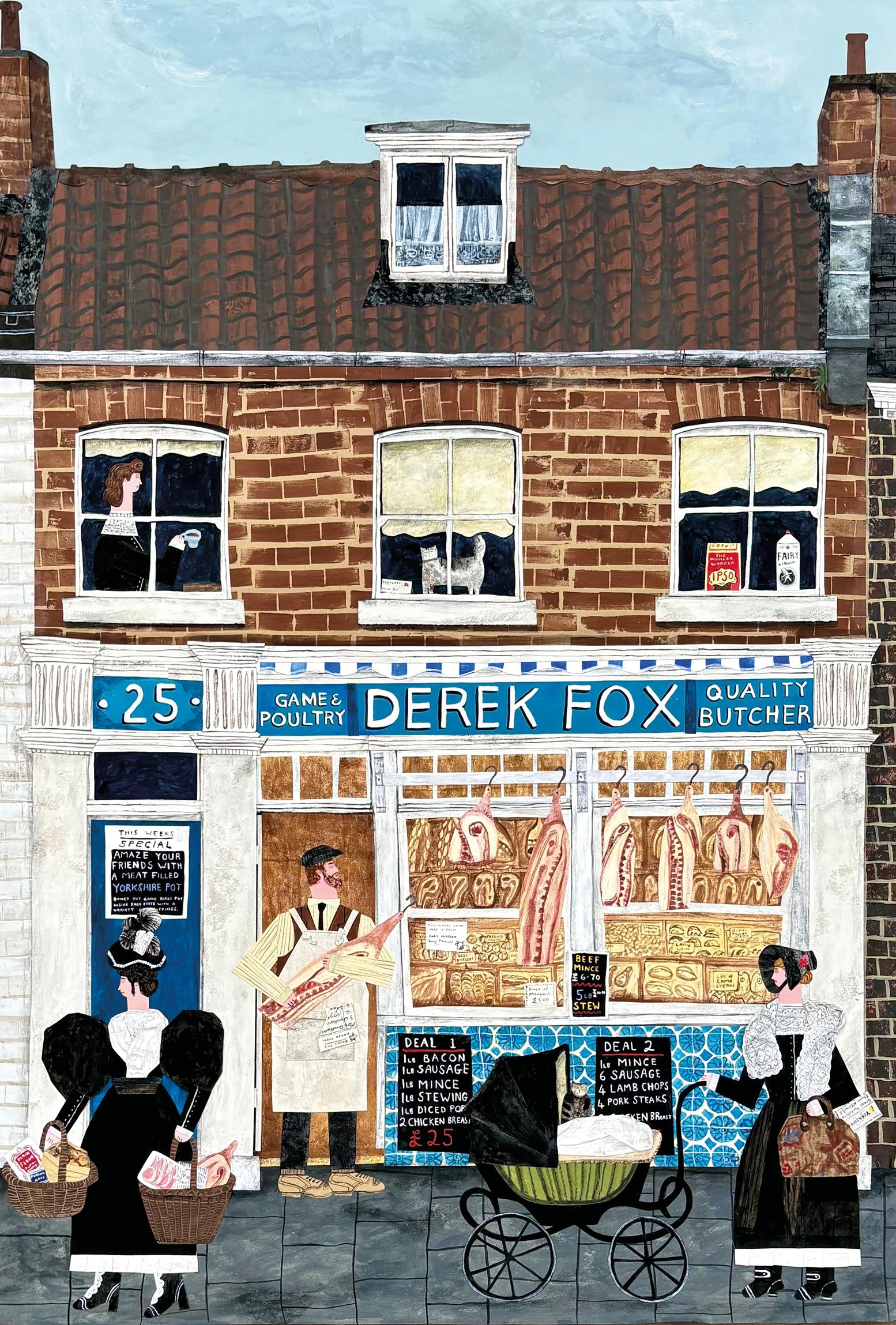


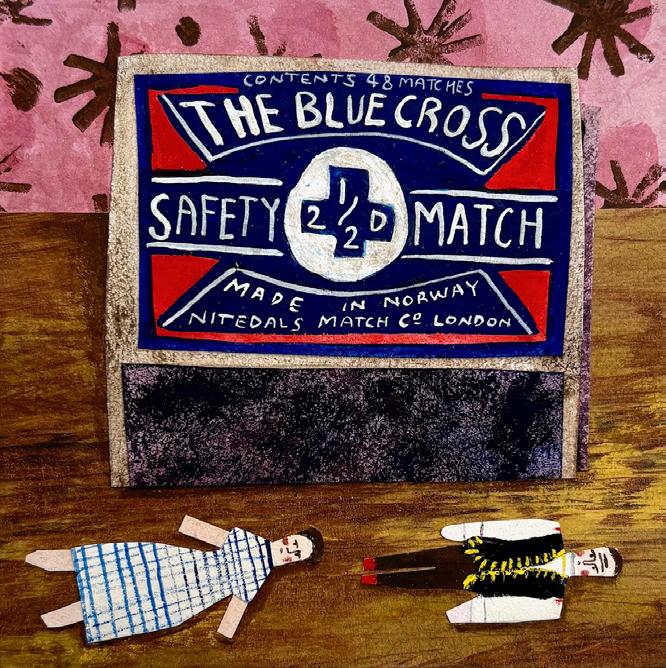


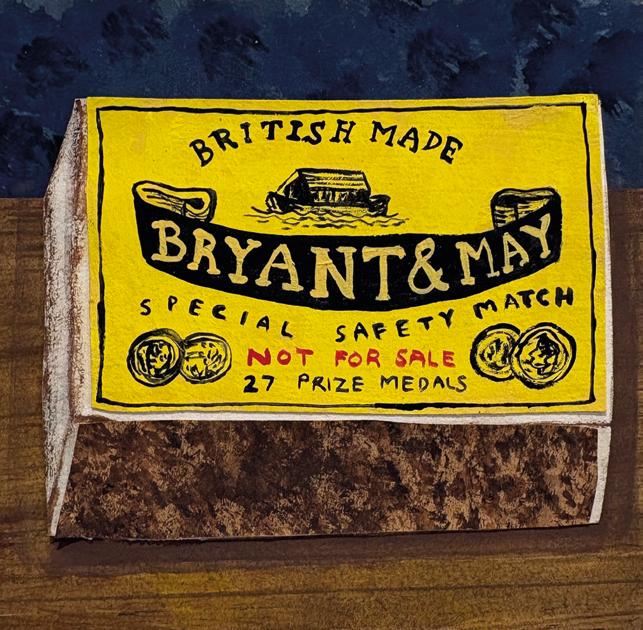


































X 24. Fish Delivery gouache, acrylic and pencil crayon on found paper, 31 x 31 cm
C 25. Rummy gouache, acrylic, and pencil crayon on found paper, 31 x 31 cm






























































X 26. Salmon for Dinner gouache, acrylic and pencil crayon on found paper, 31 x 31 cm
C 27. To the Post Office gouache, acrylic and pencil crayon on found paper, 31 x 31 cm


































































































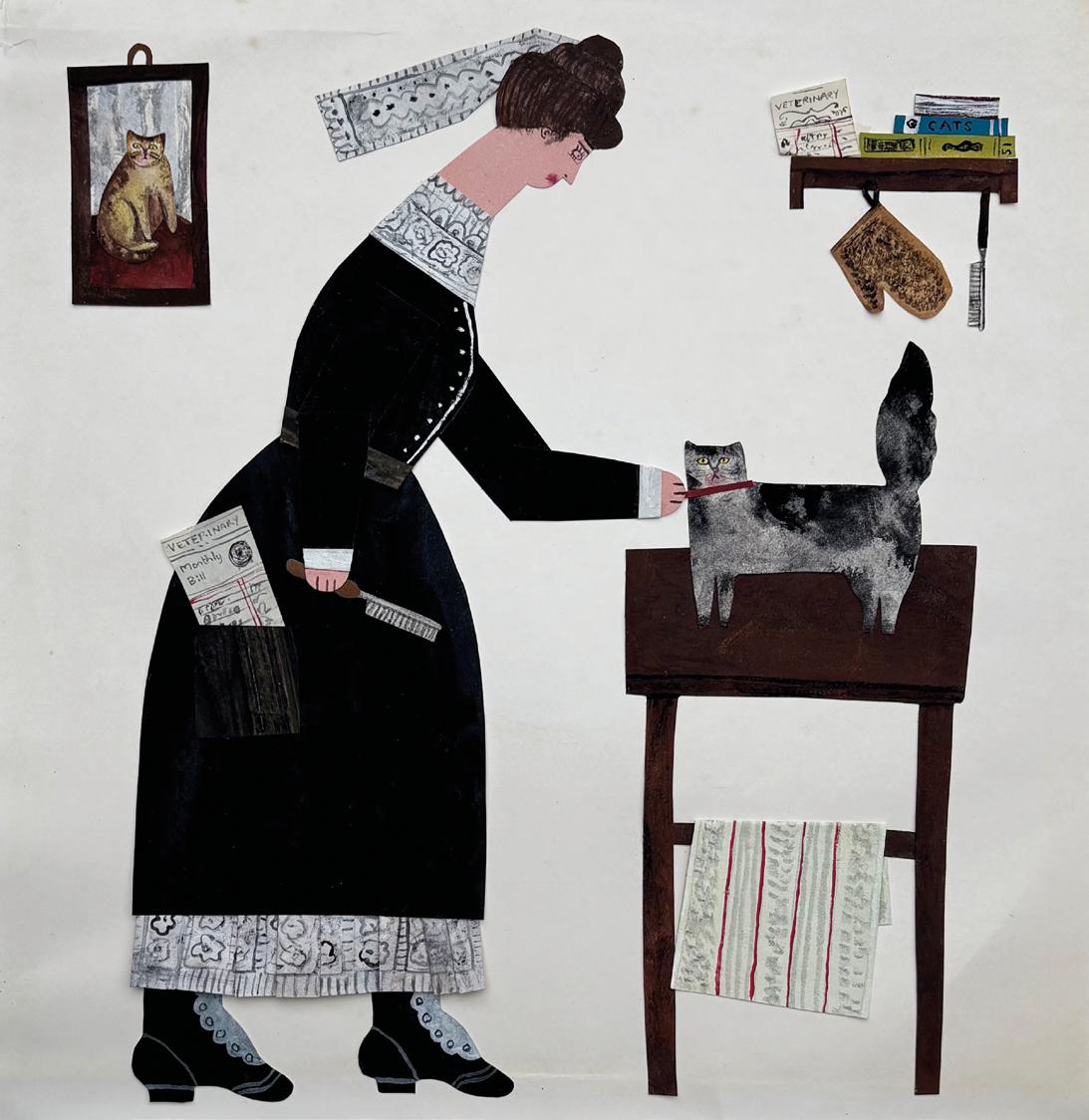

2 35. A Morning Brush gouache, acrylic and pencil crayon on found paper, 31 x 31 cm
X 36. Breakfast Kippers gouache, acrylic and pencil crayon on found paper, 31 x 31 cm





























































X 37. Dominoes
gouache, acrylic, and pencil crayon on found paper, 31 x 31 cm
C 38. Milk Before Bedtime gouache, acrylic, and pencil crayon on found paper, 31 x 31 cm

































Kate Black (b.1981, Walsall) is a British artist working across collage, printmaking and textiles. She holds a BA in Fine Art from the University of Wales, Cardiff (1999 to 2002) and an MA in Fine Art from the University of Leeds (2009 to 2011). Now based in Malton, North Yorkshire, Black draws inspiration from social history, antique objects and museum collections.
Her distinctive practice often incorporates found ephemera, particularly matchboxes and other small domestic curiosities, forming visual dialogues between printed imagery and still life arrangements. These narratives explore memory, symbolism and the quiet complexities of everyday life.
Kate Black has exhibited widely in the UK, including repeated selection for the Trinity Buoy Wharf Drawing Prize and The Sunday Times Watercolour Competition. She was artist in residence at Drawing Projects UK in 2016 and has held solo exhibitions at Myriad in London and across Yorkshire. The Women of the Parish marks her debut solo presentation at The Scottish Gallery.






























Published by The Scottish Gallery to coincide with the exhibition:
Kate Black
The Women of the Parish 4 - 27 September 2025
Exhibition can be viewed online at: scottish-gallery.co.uk/kateblack
ISBN: 978-1-917803-04-5
Designed and Produced by The Scottish Gallery
Printed by Pure Print
Front cover: Derek Fox, gouache, mixed media on paper 122 x 84 cm (cat.14)
All rights reserved. No part of this catalogue may be reproduced in any form by print, photocopy or by any other means, without the permission of the copyright holders.



